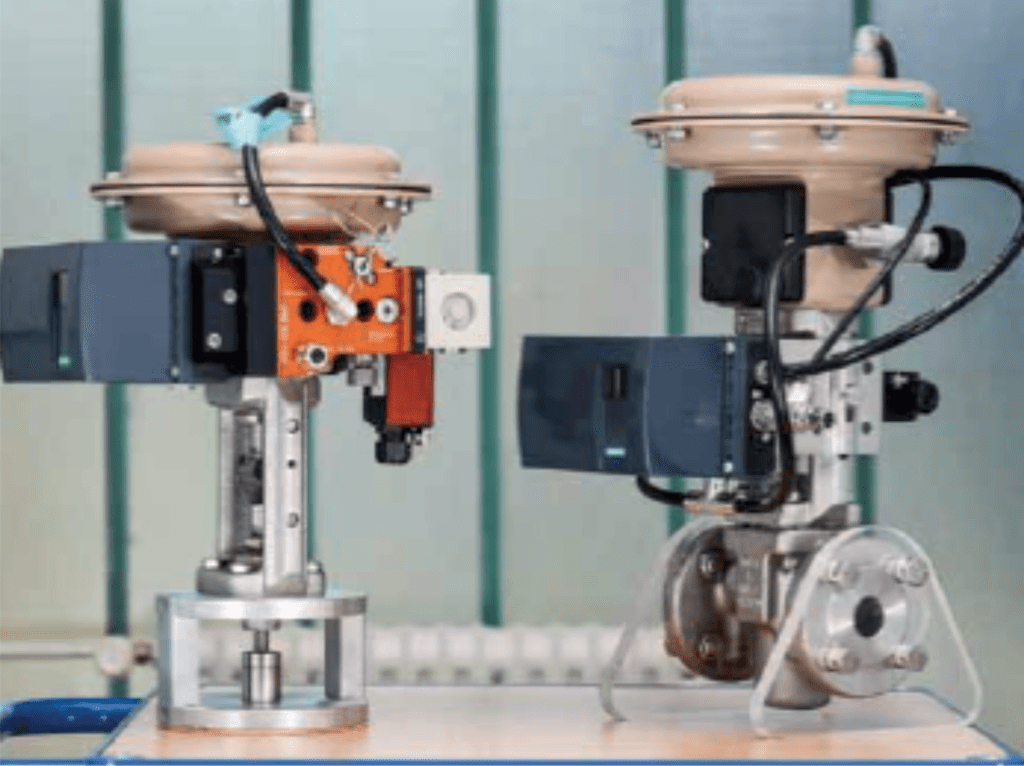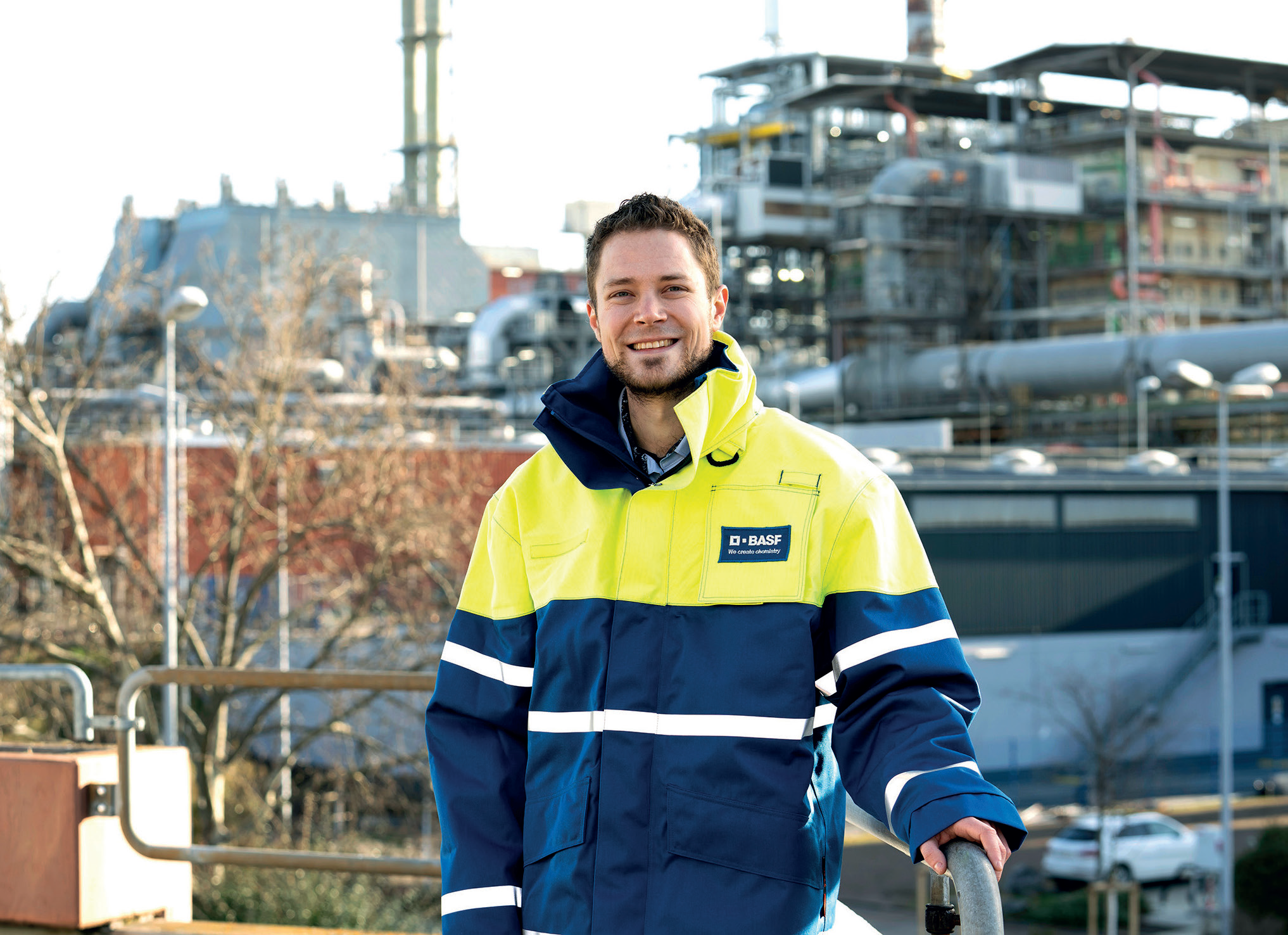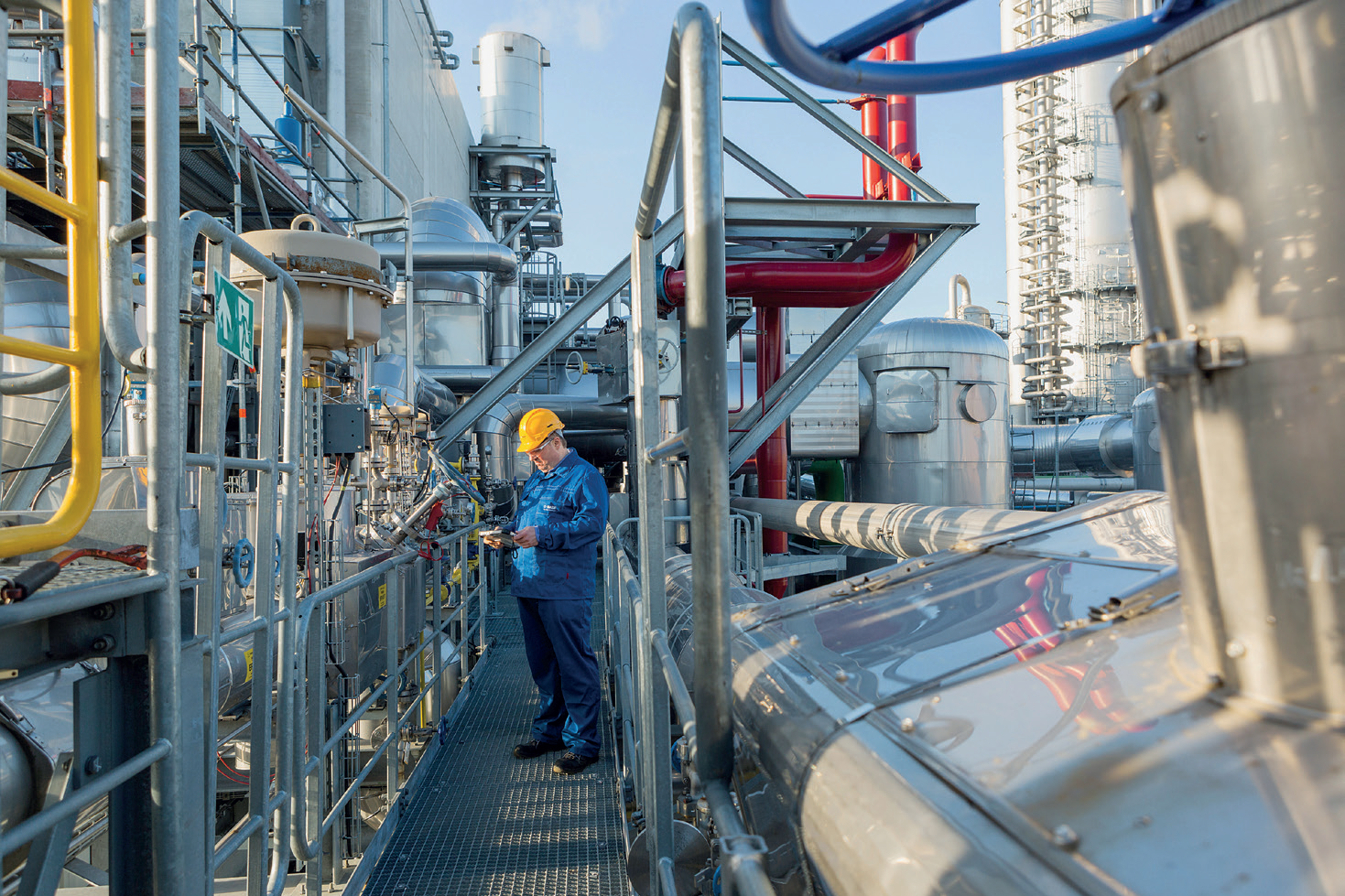As a member of the Technical Expertise Team at Ludwigshafen, Alexander Hein deals with automated valves in various production plants across BASF’s oldest and largest Verbund site. “From the naphtha crackers to the units that produce specialized chemicals, our team has an impact as valves and actuators are indispensable for a safe and efficient production. There is still progression possible, especially in the domain of digitalization making more use of the positioners, the valves’ interface to the automation system.”
By KCI Editorial
Alexander Hein (28) joined BASF a year ago, making a switch from academia to the private sector. Hein has also joined the Steering Committee for the Valve World Conference 2022, replacing his colleague Matko Dijkman. But first, a step back into Hein’s career before BASF.
“My background is in technical physics which I studied at the University in Kaiserslautern. I also took courses in electrical and mechanical engineering. Through my university education and experience as an intern with Bosch I became more and more attracted to business challenges such as product development and actual production. My last research project at university aimed at commercializing a new technology of tunable optical filters for which I worked together with several industrial partners to optimize material supply, their performance, and the device production workflow. This project management experience and the technical understanding I gained were helpful for my career start at BASF. I now work in interdisciplinary teams and contribute with technical expertise to find the most suitable valve for the given process conditions.”

Powerhouse
Although Hein thoroughly enjoyed his tenure at the University of Kaiserslautern, he decided to switch from academia to the private sector in 2021. “I came into contact with BASF through my alumni-network. During one of the regular alumni-meetings where BASF employees also made presentations about their work and shared their experiences at the company, I became interested in making a switch. The BASF brand stands for innovation and state-of-the-art technology. We are one of the largest chemical producers in the world and active in all the major countries (80-plus) around the globe. Who would not want to work for such a powerhouse?”
True, a brief look at BASF’s company profile and product portfolio shows the broad scope of base and specialty chemicals, advanced plastics, surface technologies, nutrition & care, and agricultural solutions.
Within this huge company, with its Verbund-structure and various joint-ventures, Hein and his team provide technical support for valve technologies in various aspects of global projects, from specification, engineering, procurement, and commissioning, up to advice during the overall life cycle of the valves.
Shared Insights
The Verbund-site in Ludwigshafen also harbors a valve workshop where valves can be tested and refurbished/ repaired. Insights from these activities add value to the technical support and advice the unit provides to the plants in Ludwigshafen. However, the team also shares these insights with their colleagues abroad. “It is important that we reach out and communicate for the benefit of the company and its employees. Critical valves are essential elements in assuring a safe and efficient production process.”
When asked about his first year at BASF, Hein mentioned that one of his work’s focuses is to improve the interchangeability of pneumatic actuators. “If we want to change an actuator, the modularity is important, i.e., such changes shall not involve time-consuming adaptions of the valve stem and coupling. We also would prefer having the flexibility of selecting a valve we have on stock for replacement and not being dependent on specific models from specific suppliers.”
IPM
The Integrated Pneumatic Module (IPM) is another example of harmonization and standardization within the multinational’s flow control portfolio. The IPM (see Valve World April 2020) has been co-developed and introduced by BASF mainly to simplify the configuration for linear and quarter-turn actuators, both in standard and more complex configurations.
“The IPM has been designed to prevent unnecessary mistakes in the installation and maintenance process. The IPM also has potential in plant availability – safety and savings, for example, in stock keeping.”
Hein stated that the IPM has led to a reduction in complexity for service personnel on the ground that has to deal with these valve/actuator configurations and experience at first-hand the complexity of these systems.
At the moment, the IPM is in use within BASF after years of development, testing and taking other companies along, both end users and suppliers, in the necessary standardization effort in the Namur- and VDI/VDE-committees.

“If we want to change an actuator, the modularity is important, i.e., such changes shall not involve timeconsuming adaptions of the valve stem and coupling. We also would prefer having the flexibility of selecting a valve we have on stock for replacement and not being dependent on specific models from specific suppliers.”
Close Cooperation
Hein stressed that in his current project, BASF has opted for a cooperative model with valve suppliers. “We are interested in long-term cooperation with our suppliers. We are talking about assets that are in operation for decades. Just focusing on investment costs might not be favorable since lower-quality products may lead to higher operating costs due to maintenance and subsequent product loss. When we work together with our suppliers in such a way, we can reach their commitment to support our long-term developments leading to more value in the end.”
Critical in the valve life cycle is the monitoring of the valve’s condition during its operating life. Hein said that easily accessible static data such as device configuration is helpful for documentation purposes, but also sees a high future potential in making use of time-dependent dynamic data. “We are able to extract dynamic data such as the current supply pressure or the percentage of stroke from the positioner, which combined with other production parameters, indicate if the valve operates within an acceptable range. Together with our valves and DCS-partners, we are developing this further to incorporate this practice into our monitoring and predictive maintenance program. In essence, we would be able to zoom in on potential problematic valves earlier and easier. For example, we would be able to correlate valve data with other process parameters and gain deeper insights from data recorded during partial stroke tests.”
Valve Digitalization
With the aforementioned topic, digitalization comes into the picture. BASF is active in this field to streamline its operations, including flow control equipment. “We are working on a digital platform in the cloud which contains technical data regarding our assets out in the field. This data is stored in a particular, uniform format so that there are no supplier-specific deviations. Our colleagues in the field are then able to tap into the data by scanning QR or RFID codes that are attached to related equipment. This modus operandi greatly reduces time spent in the field and potential confusion due to inadequate access to documentation. Similarly, we are working on a procurement platform that standardizes and harmonizes our procurement processes, irrespective of the vendor or product type.”




